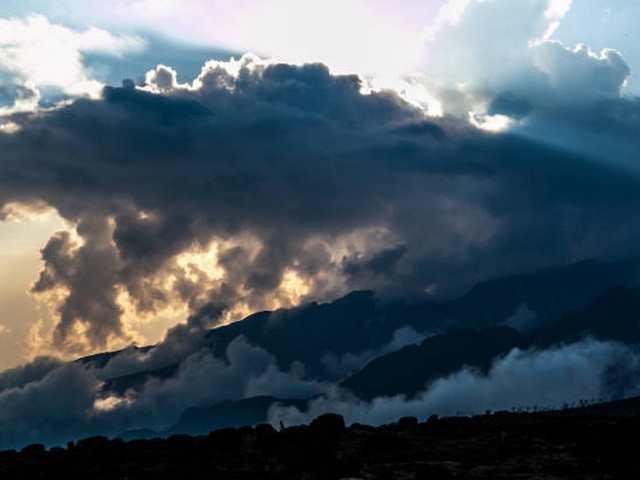Cultural Insights for Kilimanjaro Trekkers: A Gateway to Tanzanian Heritage
When you plan a trek to the iconic Mount Kilimanjaro, you embark on more than just a physical journey; it’s a rich, cultural voyage that offers deep insights into the heart of Tanzanian traditions and the souls of its people. At the Kilimanjaro Centre for Trekking and Ecotourism (KCTE), we believe that understanding the local culture enriches your climbing experience, weaving together the natural beauty of the landscape with the vibrant life of its inhabitants. This blog post will delve into the multifaceted cultural tapestry that surrounds Kilimanjaro, providing trekkers with invaluable knowledge and inspiration to enhance their adventure.
The Cultural Significance of Mount Kilimanjaro
The Mountain as a Spiritual Beacon
Mount Kilimanjaro is not only the highest peak in Africa but also a significant spiritual symbol for the Chagga and Maasai tribes that inhabit the surrounding area. For centuries, this majestic mountain has been a site of rituals and a symbol of powerful, spiritual significance. Understanding these traditions helps trekkers appreciate the sacredness of their journey.
Kilimanjaro and Its People
The communities residing around Mount Kilimanjaro, especially the Chagga and Maasai, offer a window into unique ways of life shaped by the mountain’s ecological system. Their agricultural practices, cattle herding, and traditional homes reflect a harmonious existence with nature, providing fascinating learning opportunities for visitors.
Engaging with Local Traditions
Music and Dance
Tanzanian music and dance are integral to local celebrations and ceremonies, often seen during village visits or specially arranged cultural nights at trekking camps. Engaging with these performances offers a joyful and profound insight into the local spirit and community life.
Art and Craftsmanship
From intricate beadwork and jewelry of the Maasai to the finely woven baskets of the Chagga, the artisanship around Kilimanjaro is a testament to the region’s rich cultural heritage. Trekkers can support local craft by purchasing souvenirs directly from the artisans, promoting sustainable tourism.
Culinary Delights
Sampling local cuisine is a must for cultural enthusiasts. Dishes like Ugali (a maize porridge), Chagga stews, and freshly brewed banana beer provide a taste of the regional palette. These culinary experiences are not just about eating; they are about understanding the local agriculture and dietary practices.
Language and Communication
Swahili – The Heartbeat of Tanzania
Swahili is widely spoken in Tanzania and learning a few basic phrases not only eases communication but also enriches your interactions with local guides and villagers. Phrases like “Jambo” (Hello), “Asante” (Thank you), and “Habari?” (How are you?) are simple yet powerful tools in bridging cultural gaps.
Non-Verbal Cues
Understanding local gestures and non-verbal communication can significantly enhance your cultural interaction. For instance, prolonged eye contact may be considered rude in some Tanzanian cultures, whereas a slight bow or nod is a sign of respect.
Responsible Trekking and Cultural Sensitivity
Respecting Local Norms and Practices
As trekkers, it’s crucial to approach cultural differences with respect and openness. Dress conservatively, ask permission before taking photographs, and show deference to elders and local leaders.
Eco-Cultural Tours
At KCTE, we offer eco-cultural tours designed to minimize environmental impact while maximizing cultural exchange. These tours support local economies and provide deeper insights into the environmental conservation efforts taken by indigenous communities.
Planning Your Trek with Cultural Immersion
When to Visit
Timing your visit to coincide with local festivals or ceremonies can greatly enrich your experience. Consult with KCTE to plan your trek around these cultural events.
Choosing the Right Guide
Opt for local guides who not only lead you safely up the mountain but also act as cultural interpreters. Our guides at KCTE are trained to offer both reliable trekking expertise and cultural knowledge.
Community Visits
Include visits to local villages and community projects in your itinerary to see firsthand the cultural practices and daily lives of the local people. These visits are eye-opening and often cited as highlights of the trek.
Conclusion: Why Trek with KCTE?
Trekking Kilimanjaro is an adventure of a lifetime, and when coupled with profound cultural experiences, it becomes even more enriching. At Kilimanjaro Centre for Trekking and Ecotourism (KCTE), we are committed to providing a holistic and immersive trekking experience that respects both the natural and cultural environments of this magnificent region.
FAQ: Cultural Insights for Kilimanjaro Trekkers
What should I wear during my visit to local communities?
Opt for modest clothing that covers shoulders and knees, respecting local cultural norms.
Can I participate in local ceremonies?
Participation is often welcome, but always ask your guide for advice on appropriate involvement.
How can I contribute to the local communities?
Consider purchasing local crafts, donating to community projects, or engaging in sustainable tourism practices recommended by KCTE.
Embark on your Kilimanjaro trek with an open heart and mind, ready to absorb the majestic beauty and rich cultural tapestry of Tanzania. Book your climbing adventure with Kilimanjaro Centre for Trekking and Ecotourism (KCTE) today, and step into a world where every trail tells a story, and every face has a smile that welcomes you home.




